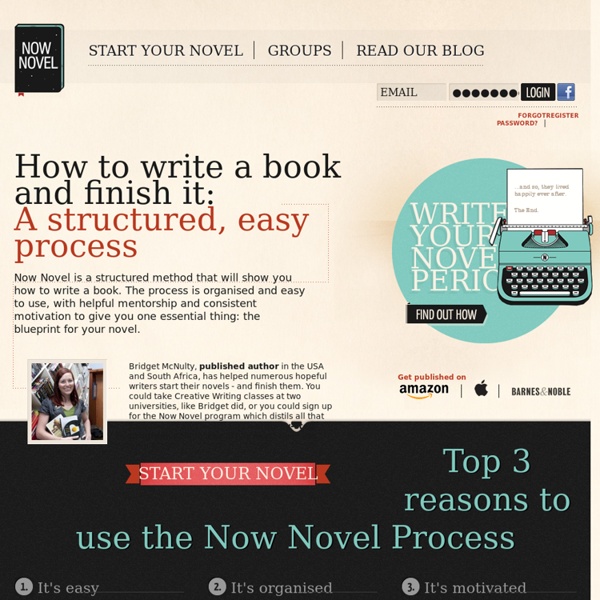Zoom
Trash
Related:



23 Fiction Writing Ideas That Will Revitalize Your Story Posted by Melissa Donovan on September 29, 2015 · Refresh your story with these fiction writing ideas. Sometimes our fiction writing projects dry up. The characters turn out to be flat, the plot becomes formulaic, and the story suddenly seems lackluster. This is when a lot of writers give up and file their half-finished manuscripts into a bottom drawer never to be seen again. Before giving up on a project, why not try to resurrect it? Fiction Writing Ideas Today’s writing ideas will help you enhance stories that are suffering from a variety of maladies ranging from boring plots to unrealistic characters. Give your characters more than a goal. Got Any Fiction Writing Ideas? Got any tips or ideas to add? About Melissa DonovanMelissa Donovan is a website designer and copywriter.
Creative Mind Mapping for Novelists Brainstorming ideas seems to be one of the hardest stages in the writing process for many novelists. As I discussed in a previous post, this storm of ideas that flash and thunder in our brains often appears unruly and difficult to harness. I introduced the practice of mind mapping, which is used across many disciplines—such as in classrooms for essay writing and in business meetings to problem-solve. Mind mapping can be used in just about any situation when ideas need to be reeled in and transformed into practical application. Mind Map on the Macro and Micro Levels I’ve never seen anyone specifically focus on novel structure or fiction plotting via mind mapping, so I’m going to show you ways I feel mind mapping can be useful for the novelist. Going deeper, you can merge mind maps, which I’ll explain in a later post. Brainstorming Characters and Theme Together I’m a character-driven novelist, so I always first start with character ideas along with theme. Focusing on Theme in Your Mind Map
Guide to Writing Better Than You Normally Do. Writing is a muscle. Smaller than a hamstring and slightly bigger than a bicep, and it needs to be exercised to get stronger. Think of your words as reps, your paragraphs as sets, your pages as daily workouts. Think of your laptop as a machine like the one at the gym where you open and close your inner thighs in front of everyone, exposing both your insecurities and your genitals. Because that is what writing is all about. Procrastination is an alluring siren taunting you to google the country where Balki from Perfect Strangers was from, and to arrange sticky notes on your dog in the shape of hilarious dog shorts. The blank white page. Mark Twain once said, “Show, don’t tell.” Finding a really good muse these days isn’t easy, so plan on going through quite a few before landing on a winner. There are two things more difficult than writing. It’s no secret that great writers are great readers, and that if you can’t read, your writing will often suffer.
Writing tips - James Thurber In his 1949 book, Thurber Country, celebrated author, cartoonist and satirist James Thurber offers some amusing rules for comedy writers, "established [...] after receiving dozens of humorous essays and stories from strangers over a period of twenty years." Those rules are as follows. (Source: Thurber Country; Image: James Thurber, via Wikipedia.) 1. The reader should be able to find out what the story is about.2. Some inkling of the general idea should be apparent in the first five hundred words.3.
OmPad: Free, beautiful, minimal and inspirational writing web app Welcome to OmPad! Free minimal writing app that helps you focus and concentrate on writing great content. Format your text with headings, bold, italic, links, images, lists, code and quotes. Customization: Change the theme, size, font and width by hovering over the OmPad logo (bottom left)Formatting: Select the text and a floating toolbar will show up.Images: Type in a URL, select it and click the image buttonHTML: Click the bottom right word-count You can start editing this text you are reading right now, go ahead, click here and start typing! "This is the best writing app ever, and it's free!" Put your browser on full screen mode for an immersive distraction-free experience. Simple, powerful, beautiful. There is no Save button, everything is auto-saved as you type. Made with ❤ by Xavi Esteve
One Sentence - True stories, told in one sentence. Dramatica - The Next Chapter in Story Development